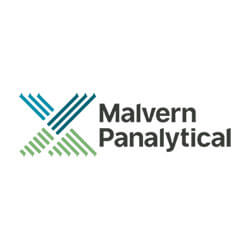In this white paper we examine the deformulation workflow, demonstrating the value of the technique of Morphologically Directed Raman Spectroscopy (MDRS) within this context. Case studies illustrate the relevance of MDRS data.
Introduction
Oral Solid Dosage (OSD) forms still represent a significant share of the pharmaceutical market. As a result, they remain an important target for generic product developers. OSD products tend to be viewed as simpler to reverse engineer compared to those with more complex delivery mechanisms, such as Orally Inhaled and Nasal Drug Products (OINDPs). However, deformulation - the unpicking and rationalization of those characteristics of a Reference Listed Drug (RLD) that deliver its performance - still requires significant effort, especially when considering modified or sustained release OSD products. In addition, the development of a new generic can be an intensely competitive process, with multiple companies chasing the opportunity to be first to file in the US in order to claim a highly valuable period of exclusivity. Optimizing the deformulation workflow to accelerate submission and secure regulatory approval is therefore an important goal.The FDA’s Critical Path Opportunities for Generic Drugs [1] guides the workflow associated with generic development, and emphasizes the need to adopt a Quality by Design (QbD) approach. QbD calls for the development of a sound understanding, and robust control, of all the variables that impact product and process behavior. This creates a need for extensive information gathering from the outset. The guidance clearly recognizes the role of analytical technology in delivering relevant information, and calls for advances in the analytical technology used in characterizing drug substances and products.
In this white paper Dr Deborah Huck-Jones and Dr Paul Kippax examine the deformulation workflow, demonstrating the value of the technique of Morphologically Directed Raman Spectroscopy (MDRS) within this context. Case studies illustrate the relevance of MDRS data.
The growing challenge of OSD deformulation
The complexity of generic OSD development is increasing steadily as innovators push back the boundaries of pharmaceutical engineering to formulate products with precisely controlled clinical performance. This situation is acknowledged by the FDA, which has openly stated that “In the characterization stage, some generic products are challenging to develop because of the complexity of the reference product.” Fully understanding and rationalizing every aspect of the performance of an RLD is an essential precursor to the development of a generic that is both safe and effective.
The potential for incomplete understanding to result in poorly controlled clinical efficacy is exemplified by the phenomenon of ‘dose dumping’ as a result of elevated blood alcohol levels [2]. There is growing evidence that alcohol consumption can impact the controlled release performance of OSD formulations causing the drug to be released over a much shorter timescale than the design intent. This results in a higher peak in drug concentration in the blood than would otherwise have occurred, with the associated potential for an adverse clinical effect. This concern points to new assessment requirements for both innovator and generic products and illustrates the extensive studies needed to fully scope OSD performance.
To promote the necessary rigor in generic development there is now a regulatory requirement to demonstrate a QbD approach when working towards an Abbreviated New Drug Application (ANDA). A QbD approach focusses initially on identifying a Quality Target Product Profile (QTTP) for the product - a definition of its clinical performance. In the case of generics this target is most usually bioequivalence with the target RLD. The next steps involve systematic assessment of the variables that impact the QTPP and the development of strategies that will control these critical quality attributes (CQAs).
Effective deformulation builds the understanding that underpins this QbD approach and is driven by relevant analytical information. In many cases this means that the analytical technology required for deformulation needs to be even more sophisticated than that used during development of the RLD itself. An examination of the deformulation workflow focuses attention on the information that is needed.
Click here to read the full article
Malvern Instruments provides the materials and biophysical characterization technology and expertise that enable scientists and engineers to understand and control the properties of dispersed systems. These systems range from proteins and polymers in solution, particle and nanoparticle suspensions and emulsions, through to sprays and aerosols, industrial bulk powders and high concentration slurries. Used at all stages of research, development and manufacturing, Malvern’s materials characterization instruments provide critical information that helps accelerate research and product development, enhance and maintain product quality and optimize process efficiency. Our products reflect Malvern’s drive to exploit the latest technological innovations and our commitment to maximizing the potential of established techniques. They are used by both industry and academia, in sectors ranging from pharmaceuticals and biopharmaceuticals to bulk chemicals, cement, plastics and polymers, energy and the environment. Malvern systems are used to measure particle size, particle shape, zeta potential, protein charge, molecular weight, mass, size and conformation, rheological properties and for chemical identification, advancing the understanding of dispersed systems across many different industries and applications. Headquartered in Malvern, UK, Malvern Instruments has subsidiary organizations in all major European markets, North America, Mexico, China, Japan and Korea, a joint venture in India, a global distributor network and applications laboratories around the world. www.malvern.com severine.michel@malvern.com





